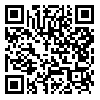Volume 78, Issue 6 (September 2020)
Tehran Univ Med J 2020, 78(6): 388-396 |
Back to browse issues page
Download citation:
BibTeX | RIS | EndNote | Medlars | ProCite | Reference Manager | RefWorks
Send citation to:



BibTeX | RIS | EndNote | Medlars | ProCite | Reference Manager | RefWorks
Send citation to:
Hamta A, Saghafipour A, Mozaffari E, Salemi Z. Factors affecting the antimonial treatment duration rate in patients with cutaneous leishmaniasis: survival analysis model. Tehran Univ Med J 2020; 78 (6) :388-396
URL: http://tumj.tums.ac.ir/article-1-10656-en.html
URL: http://tumj.tums.ac.ir/article-1-10656-en.html
1- Department of Family and Community Medicine, Faculty of Medicine, Qom University of Medical Sciences, Qom, Iran.
2- Department of Public Health, Faculty of Health, Qom University of Medical Sciences, Qom, Iran.
3- Department of Medical Entomology and Vector Control, School of Public Health, Tehran University of Medical Sciences, Tehran, Iran.
4- Student Research Committee, Faculty of Health, Qom University of Medical Sciences, Qom, Iran.
2- Department of Public Health, Faculty of Health, Qom University of Medical Sciences, Qom, Iran.
3- Department of Medical Entomology and Vector Control, School of Public Health, Tehran University of Medical Sciences, Tehran, Iran.
4- Student Research Committee, Faculty of Health, Qom University of Medical Sciences, Qom, Iran.
Abstract: (1660 Views)
Background: Currently, cutaneous leishmaniasis (CL) as a parasitic disease is treated with Glucantime and Pentostam in most of the endemic countries. This study aimed to identify factors affecting the glucantime therapy duration rate in patients with CL using a survival analysis model.
Methods: This retrospective descriptive-analytic study was conducted on 1017 CL patients that were referred to the urban and rural comprehensive health centers of Qom Province under the supervision of Qom University of Medical Sciences, Qom, Iran, from April 2014 to March 2019 through the census. The recovery time was measured by the Kaplan-Meier method, and then the survival function was plotted based on each variable. The Log-Rank test was applied to analyze the differences among variables, and after the evaluation of the PH assumption by Shoenfeld residuals, a stepwise forward Cox progressive regression was used to determine factors affecting intralesional or systematic treatment duration in the patients involved with cutaneous leishmaniasis.
Methods: This retrospective descriptive-analytic study was conducted on 1017 CL patients that were referred to the urban and rural comprehensive health centers of Qom Province under the supervision of Qom University of Medical Sciences, Qom, Iran, from April 2014 to March 2019 through the census. The recovery time was measured by the Kaplan-Meier method, and then the survival function was plotted based on each variable. The Log-Rank test was applied to analyze the differences among variables, and after the evaluation of the PH assumption by Shoenfeld residuals, a stepwise forward Cox progressive regression was used to determine factors affecting intralesional or systematic treatment duration in the patients involved with cutaneous leishmaniasis.
|
Results: The recovery rate of lesions in cutaneous leishmaniasis cases was found to be 96.7% by the intralesional treatment and 93% by the systematic one. The mean recovery time for cutaneous leishmaniasis patients was 8.00 weeks for the intralesional treatment and 18.00 days for the systematic treatment. The only significant variable in the intralesional treatment was observed on cases with thigh lesions, meaning that those patients who had CL lesions on their thighs experienced a significant reduction in their recovery time. Furthermore, the lesion variable was also significant (P=0.039) as the recovery chance of those patients who had four or more CL lesions was 30% less.
Conclusion: The existence of lesions on CL patients’ thighs and a low number of lesions in CL patients can decrease the recovery time. The use of the Cox regression model in medical studies is more appropriate because not only does it consider the occurrence of the event but also it can reveal the occurrence time of the disease. |
Type of Study: Original Article |
| Rights and permissions | |
 |
This work is licensed under a Creative Commons Attribution-NonCommercial 4.0 International License. |





